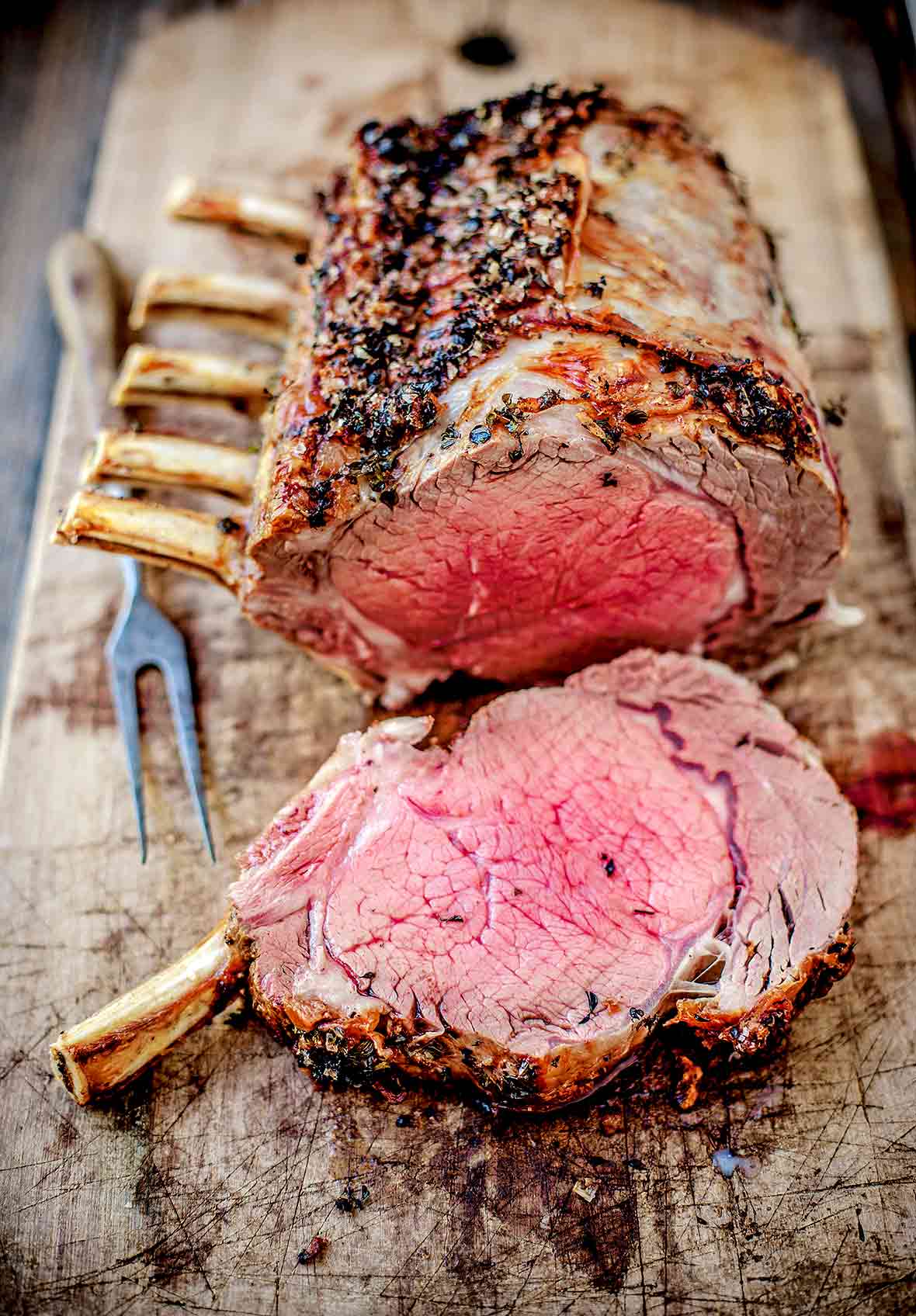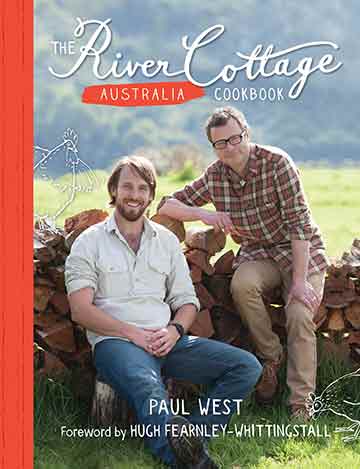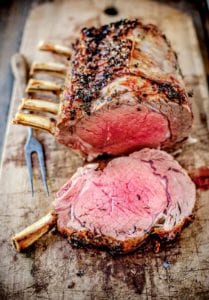
Whipping up a stunning standing rib roast isn’t nearly as extreme an undertaking as you may think. The mere words standing rib roast tend to inspire awe. And the sight of the actual standing rib roast never fails to elicit ohhs and ahhs at the table. So you’ve already got that going for you. As for how to get there, look to the instructions below for the rest of the know-how. And be at the ready to accept accolades. One last thing, and that’s to be certain to seek out a roast with a generous coating of fat, which keeps the roast bathed in melting unctuousness while it roasts.
Why You Need an Instant-Read Thermometer
When Making a Standing Rib Roast
When cooking big joints of meat like this standing rib roast, an instant-read probe thermometer helps dispel any guesswork. And trust us, with guests waiting at the dinner table and that much money spent at the butcher shop, the last thing you want is any guesswork deciding when to take it out of the oven. As for determining the exact sit-down-and-eat time for dinner, it’s going to be a little up in the air depending on your exact size roast, sorta like turkey on Thanksgiving, so if you and your guests and your side dishes can be a little forgiving in that regard, allowing about 30 minutes leeway, you’ll take a lot of pressure off yourself.
Video: How to French Trim a Roast
How To Make Standing Rib Roast
Equipment
Ingredients
- 5-rib (5 1/2-to 6 1/2-pound) standing rib roast, frenched, if desired
- Olive oil
- Coarse salt and freshly ground black pepper
- Small bunch of thyme, leaves picked and finely chopped (about 2 tablespoons)
- Horseradish Cream, (optional)
Instructions
- Remove the meat from the fridge at least an hour before roasting so it can come closer to room temperature.
- Preheat the oven to 425°F (220°C). Place a wire rack inside a roasting pan.
- Using the tip of a sharp knife, lightly score the fatty side of the standing roast. Massage the standing rib roast all over with olive oil, salt, pepper, and the thyme leaves. Transfer the roast to the wire rack in the roasting pan, fatty side up.
- Roast for 25 minutes. Reduce the oven temperature to 350°F (180°C) and continue to roast until the internal temperature of the standing rib roast reaches 120°F (50°C) for rare and 130°F (55°C) for medium-rare. Depending on the size of your rib roast, this should be an hour and 15 minutes, to an hour and 45 minutes. (Make sure you insert the tip of the thermometer into the thickest part of the roast but away from the bone. And don’t be alarmed when you see the temperature of the roast creep upwards a few degrees while it rests as this is perfectly normal and expected.)
- Loosely cover the standing rib roast with aluminum foil to keep it warm and rest it for 30 minutes.
- Carve the standing rib roast between the bones and serve with horseradish cream, if desired.

Nutrition
Nutrition information is automatically calculated, so should only be used as an approximation.
Recipe Testers’ Reviews
My standing rib roast came out to a perfect medium rare! Our group of testers all “wowed” at how perfect it looked inside. It was tender and delicious and everyone would be happy to be asked to taste test it again. We actually didn’t notice the thyme seasoning. I found myself having difficulty predicting the actual sit-down-and-eat time. (I had to write down the 4 timing steps (bringing to room temp, initial high roast, longer slow roast, resting time.)
My family and I decided no turkey for Thanksgiving this year (except for the small one we made for sandwiches) so standing rib roast it was. Since we had 15 people to feed, my roast was a bit larger than the one called for in the recipe and weighed 19 pounds (8 1/2 kg) so I tripled the rest of the recipe. I felt that the diameter of my roast was comparable to that of smaller roasts so I kept the oven time the same. The cooking time was 30 minutes at 425°F and then 1 1/2 hours at 350°F. The roast was 120°F when I took it out of the oven but went up to 125°F while resting. My slices were perfectly pink, except for the very end pieces. I think if I had taken the roast to 130°F it would have been overcooked for my liking.












I rest my roast in the microwave. It’s a big well-insulated cavity after all.
Just put a note on the control pad so no one opens the door.
I started thinking of the microwave as a food safe when we had a big yellow lab who thought anything she could reach was fair game.
PS The microwave is also a great place to incubate yogurt and raise bread dough.
Ah brilliant, Rainey. Thank you!
Poor rib roast recipe directions. All you have to do is look at the picture of the finished roast to see that. The outer ring around the roast is over cooked while the center is almost the correct color. There are many directions available that will give you a finished product that will be the same color red from center to the edge. And it will be melt in your mouth tender.
D Clayton, did you actually make the recipe? I don’t know of any standing rib roast recipe (or any roast recipe for that matter) in which the outer edge is the same color as the center. Due to the mechanics of heat and cooking, the outer meat will be more cooked than the center. That’s why you take the temperature at the center (coolest) part of the roast.
I thought yours looked great. I’m not even sure I see much of an edge in your photo. But I think he is talking about reverse sear. Many people are raving about reverse sear now for their steaks and roasts. If your oven can do a low 150-200 deg F you can slow cook it to 120 and then rest it while the oven gets very hot and put it back in for a few minutes to sear. The latter does work pretty well at holding the pink all the way through but if you want the outside seared you’re going to have a little brown. To reverse sear a steak you cook it indirect and them move it over the flame at the end for a quick sear. The only way I can think of to get pure pink roast would be sous-vide with no sear. I’ve got a sous-vide setup but I only do “cheap” or low-fat roasts in it because the 24+ hour cook transforms them into something way better than they were meant to be. Highly recommend playing around with sous-vide. If nothing else you learn to think more carefully about temperature and how to trade it off with time.
Steven I thought of sous vide, too, after I responded. (As well as of wily food stylists who take a touch to things. I’ve seen it with my own eyes!) And, yes, a reverse sear could give you something closer to what he’s referring to. But in the end, I agree: If there’s brown on the outside, there will some brown in the inside, too.
Perfect timing, David! I am planning a standing rib roast for our holiday dinner this year as usual for us, thanks for the excellent recipe. I haven’t tried the higher temp first then turning the oven down, sounds like it will be delicious!!
Carol, it is. And I hope you like it. Take photos and send them along. We’ll post them with your comment.
Made this for Christmas dinner in 2017, and it was wonderful!
Carole, and it looks wonderful!